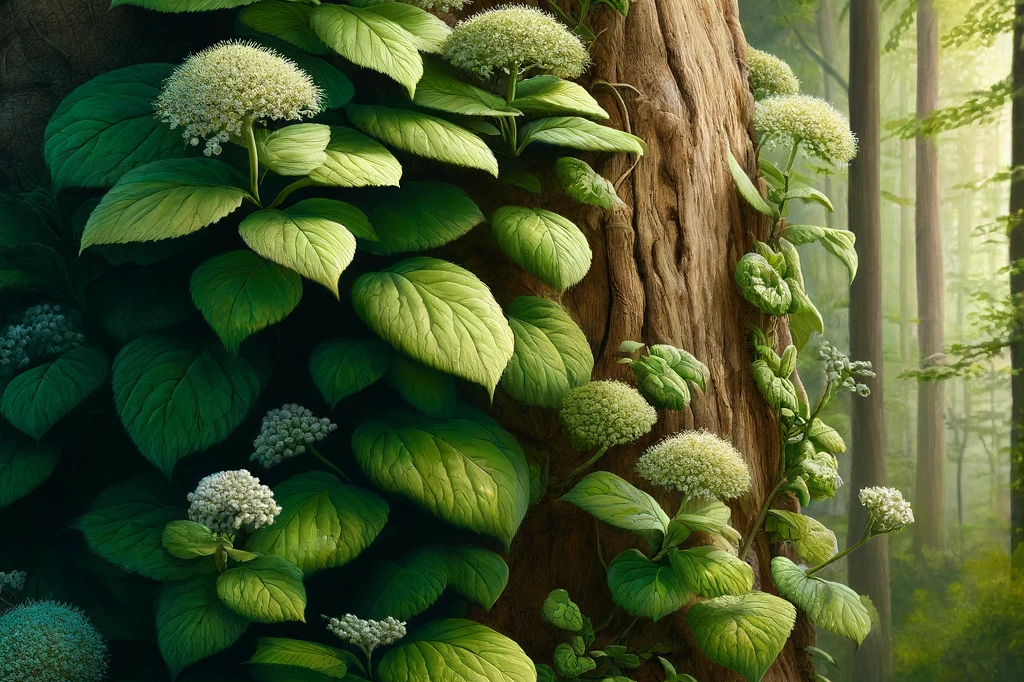Three-spired maiden vine

In the diverse world of plants, dog owners often come across the question of which plants are safe for their four-legged companions. The Tricuspid Vine, also known by its scientific name Parthenocissus tricuspidata, is one such plant that evokes both admiration for its beauty and concern for the health of our dogs. This article will take you on a journey of discovery through the properties of the Tricuspid Vine and what it means for your dog.
What is the three-pointed maiden vine?
The three-spired maiden vine is a climbing plant that is known for its ability to grow up walls and facades with the help of its adhesive roots. It belongs to the vine family and is particularly popular in garden design, where it is often used to green walls, fences and other structures. Its leaves, which can turn a spectacular red color in the fall, make it an attractive choice for many garden lovers.
The three-spired maidenhair vine and dogs: a complex relationship
Potential dangers
While the three-pointed maidenhair vine is not one of the most well-known poisonous plants for dogs, there are still some aspects that dog owners should consider:
- Potential toxicity: some sources indicate that parts of the plant, particularly the berries, may be toxic to dogs. The exact effects can range from mild discomfort to more severe symptoms, depending on the amount ingested.
- Irritation: The adhesive roots and possibly the leaves can cause skin irritation in sensitive dogs, especially if they come into direct contact with the plant.
What to do if your dog has eaten the plant?
If you suspect that your dog has eaten parts of the three-pointed maidenhair vine, watch him for signs of discomfort such as vomiting, diarrhea or excessive salivation. In the event of such symptoms, it is advisable to consult a vet to make sure there is no serious poisoning.
Precautions and protective measures
To minimize potential risks, dog owners should take the following precautions:
- Plant placement: position the Three-spired Maidenhair Vine so that it is difficult for your dog to reach. This not only prevents chewing on the plant, but also the risk of skin irritation through direct contact.
- Supervision: Supervise your dog in the garden, especially if you know he has a tendency to chew on plants.
- Education: Know the symptoms of possible poisoning and have your vet's contact details to hand should an emergency situation arise.
The Three-spired Maidenhair Vine can be a wonderful addition to your garden but, like many other plants, it does pose potential risks to your dog. However, with proper precautions and vigilant supervision, you can ensure that your garden remains a safe and enjoyable place for your four-legged friend. As with all aspects of dog ownership, knowledge is power, and by educating yourself about the plants in your garden, you can protect your dog from potential dangers while enjoying the beauty of nature.
If you notice any signs of hypersensitivity or poisoning in your dog, you should see your vet immediately. We are not a substitute for a vet, but we try to be as accurate as possible. Every dog reacts differently and we recommend you get a second opinion or consult your vet if in doubt.
Stay healthy and take good care of your four-legged friend!😊
Similar to Three-spired maiden vine
Unfortunately, ivy is poisonous to dogs. Both the leaves and the berries contain saponins, which can lead to symptoms of poisoning. These are vomitingdiarrheasalivationtremblingshortness of...
The climbing hydrangea(Hydrangea anomala subsp. petiolaris) is a deciduous climbing plant known for its ability to climb surfaces with adhesive roots and grow up to 15 meters high. In early summer,...
Clematis is a genus of around 300 species of perennial plants from the buttercup family. They originally come from the temperate zones of the northern hemisphere, but are now found all over the...
Garden honeysuckle (Lonicera caprifolium) belongs to the honeysuckle family (Caprifoliaceae) and is native to southern Europe and North Africa. It is a woody perennial plant that can climb up to 10...



